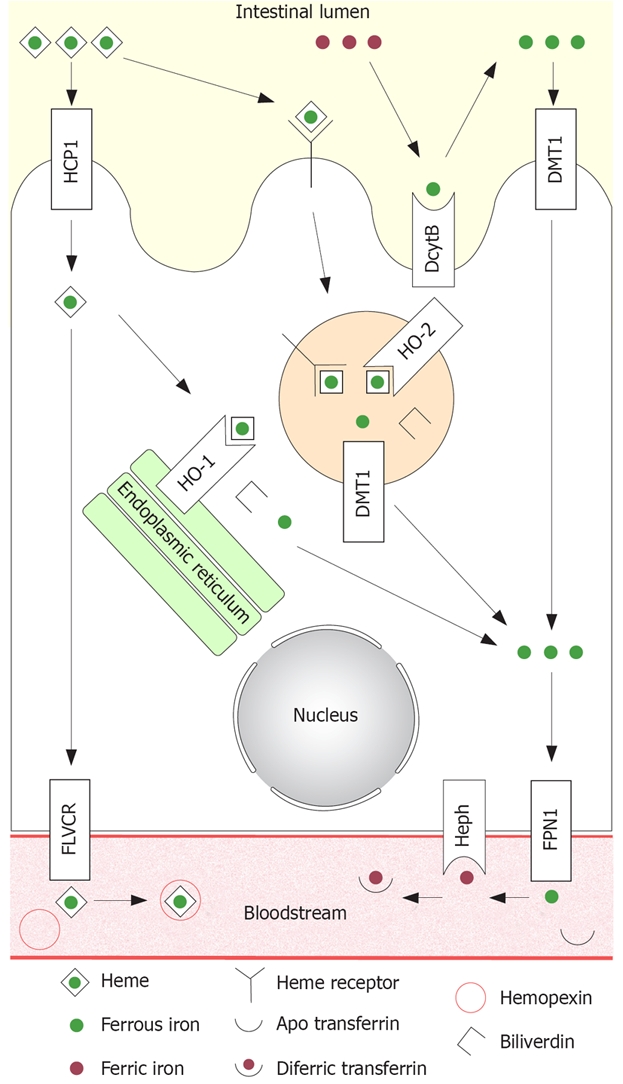Figure 1.

Summary diagram of established and putative iron absorption pathways in the intestinal enterocyte. Non-heme iron: All non-heme iron is ultimately taken up from the lumen by DMT1 situated on the microvillus membrane, before joining the labile iron pool in the cytoplasm. Ferric iron must first be reduced to the ferrous form by DcytB before uptake. Ferrous iron in the labile iron pool is then transferred to the circulation by FPN1, which requires hephaestin for oxidation to the ferric form in order to bind to circulating apotransferrin. Heme iron: Heme iron is hypothesized to be taken up by receptor mediated endocytosis. Internalised heme is degraded by HO-2 inside the vesicles, releasing non-heme iron and generating biliverdin. The non-heme iron is then transported to the cytoplasm by DMT1. Heme iron may also be taken up by PCFT/HCP1 directly into the cytoplasm. Intact heme may be transported across the basolateral membrane by FLVCR where it binds circulating hemopexin. Alternatively, heme may be catabolized to non-heme iron and biliverdin by HO-1 located on the endoplasmic reticulum. Any iron released from heme inside the enterocyte, regardless of the mode of uptake, ultimately joins the labile iron pool and is transferred to the bloodstream by FPN1 in the same fashion as non-heme iron.
